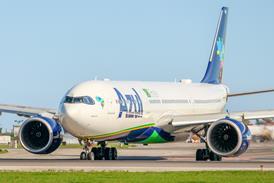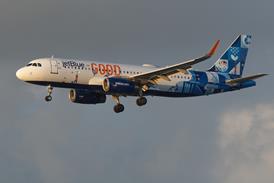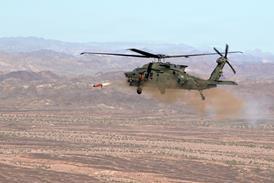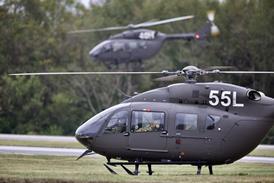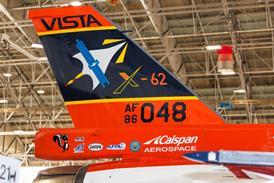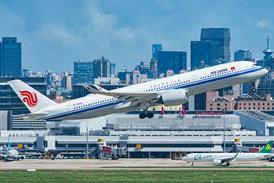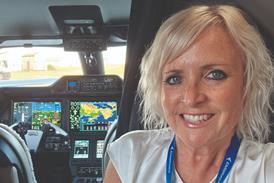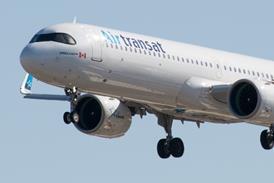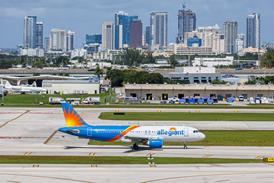KEVIN O'TOOLE / HENK OMBELET
After a solid performance from world passenger markets in 2000, growth has already shown signs of stalling as the world prepares for downturn
What a difference a few months can make to the airline business. This year was never likely to match the spectacular performance of last, but it is not so long ago that traffic still seemed to be forging ahead nicely. Then, as the summer season began, it became clear that the numbers were not only down but in a positive tailspin. With the US boom finally cooled and the world economic outlook increasingly uncertain, last year's optimism is suddenly ancient history.
The astonishing speed with which the sentiment has switched was reflected in a gloomy mid-year update from the International Air Transport Association (IATA). It points out that traffic may have started the year with a 10% rise in January (no doubt comparing favourably with the previous year's millennium aftermath), but then promptly fell off a cliff. By June it had fallen to just a 1% increase. That leaves IATA's members showing a rise of only 3% in international passenger traffic for the first half of this year and an outright 3% decline for freight.
"These figures point to a worrisome evaporation of traffic growth," says IATA general director Pierre Jeanniot. At this time last year the talk was of renewed optimism and surging demand. IATA's own traffic forecasts suggested a 5.7% growth in international passenger numbers for 2001, marking a gradual decline from the 6.6% of 2000. Anything close to those numbers would now be welcome indeed.
Certainly, the headline figures for 2000 could hardly have been better as confirmed by the latest Airline Business ranking for passenger airlines. Again the ranking is based on a full Top 200 carriers within the Air Transport Intelligence (ATI) database, the sister online service which helps to manage data for this magazine. The results cover a broad spread of operations, ranging from the majors through to regionals and low-cost start-ups. Charter traffic too is included wherever possible, although pure charter and leisure carriers have been omitted this time given that an increasing number have been swallowed up within the emerging travel giants. Charters will, in any case, have their own ranking later in the year.
The 2000 results are impressive by almost any measure. Traffic leapt by a healthy 7.5%, staying comfortably ahead of seat capacity. Thus, load factors climbed to a new high of better than 71%. These represent the strongest set of operating figures in a decade, beating the running 10-year growth averages by as much as a couple of points.
And this time the good news was distributed evenly around the world. The Middle East carriers lead with double-digit growth. Emirates roared up the rankings, pursued by its small but ambitious Gulf neighbour Qatar Airways. Even the mature North American market managed an eye-catching 6.3%.
Evidence suggests that, also this time, traffic growth did not come at quite such a heavy price. A sample of passenger yields among the major carriers suggests that the experience was largely positive, at least in local currency terms, after last year's broad decline. IATA estimates that overall yields, including freight, dipped by another 2.6% in 2000, but that itself represents a welcome return to the average after two years of worse than 4%.
Low-cost growth
While the majors remained relatively prudent in minding their capacity growth, it has been the turn of the low-cost challengers to lead traffic growth. Europe's easyJet, Ryanair and Go all head up the fast lane alongside Canada's WestJet and the USA's JetBlue, now entering the league after only its first full year. Even veteran Southwest managed close to 16% despite its size.
In Europe, the Association of European Airlines (AEA) calculates that the low-cost challengers increased their capacity offering by over 72% in summer 2000. And they are expected to grow by another 18% again this year. The AEA notes, however, that their market share remains fairly small, having edged up to 5.2% last summer from just under 4%.
The jury is still out as to how much further and deeper the decline will go before traffic regains its long-term average. Analysts have been downgrading their forecasts almost monthly as the lacklustre figures started to roll in for the summer season. What is clear is the extent to which corporations have acted early and decisively in curtailing travel budgets at the first sign of slowdown.
That has been behind much of the soul-searching taking place in the US market. The majors have struggled to maintain traffic so far this year. Most have dutifully responded by reining back on capacity growth initiatives. Brian Harris, airline analyst at Salomon Smith Barney, has gone further than most in predicting that US system capacity will rise by just 0.9% in 2001. He himself had been predicting 3.8% as recently as March. Yet as UBS Warburg analyst Sam Buttrick says, such prudence does not put business travellers back on board the aircraft.
In Europe too the accent is on trimming seat supply. British Airways was one of the few to cut back on seats last year and KLM kept growth below 2%. As traffic falls away they are being joined by others this year. Even Lufthansa has put aside its aggressive expansion.
The AEA reports that its members have actually seen traffic fall by 0.3% on intercontinental routes over the first half of this year, including a 1.4% drop on the North Atlantic. At the same time capacity growth has been at a virtual standstill. Only a recovery in intra-European traffic at just under 5% has kept the industry from outright decline.
Asia-Pacific's majors have been doing some housekeeping too, notes JP Morgan's regional airline analyst Peter Negline, but everyone is still waiting to see how the economic news unfolds. "We would like to think there are reasons to be optimistic at the tail end of the year but we are not there yet. It's too early to categorically say we are beyond the worst," he says.
His comments are echoed by analysts everywhere. While many remain hopeful that this could be a relatively shallow decline, with traffic recovering as early as 2002, no-one is making any promises until it is clear how the figures stack up towards the end of the year. Either way, carriers will have to maintain their restraint a little longer yet.
Source: Airline Business

